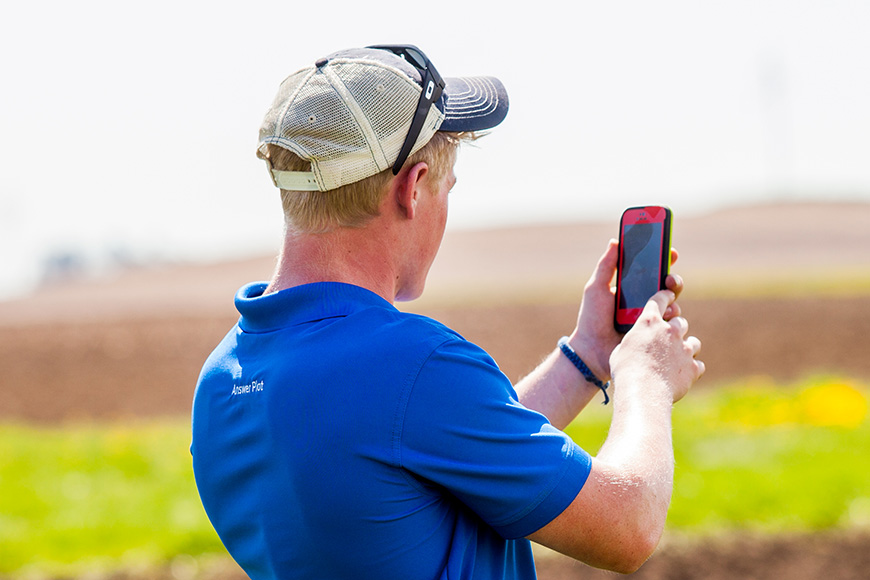Making Rural Connectivity a Reality

If you live in a rural area, you know exactly the dip in the road where you’re going to lose your cell phone signal. Finding stable cellular connections in rural America can be challenging and dropped calls are always frustrating.
Because of this, many of the apps we feature on Answer Tech include offline functionality. However, WinField United and the industry as a whole are working to help improve rural connectivity.
Partnering with big tech
WinField United’s partnership with Microsoft allows us to explore the use of its cloud services and take advantage of the stability that comes with that. And Microsoft is doing some cutting-edge research into improving connectivity to it. One of these involves a concept called TV White Spaces. These are unused VHF and UHF channels that can broadcast the internet to a signal provider, helping enhance connectivity in open areas. The goal is to eventually move that signal out into the marketplace over these unused channels at a relatively low cost and into rural areas.
Working with ag tech providers
Farmobile, one of our Answer Tech partners, is also trying to improve the connectivity of the data from machines to the cloud. One way it does this is by pulsing the field data it collects to the cloud when cell signals are available. This solves a couple of problems: One, it avoids sending a huge file all at once and part of it getting lost; and two, if connectivity is poor or nonexistent, Farmobile will store that data until connectivity is regained, then continue to pulse it to the cloud.
Our partner in this year’s drone trial, American Robotics, uses edge computing to manage file size. Edge computing places an on-board computer next to the place where the drone lands. The computer then processes the data and cleans it up. It can even turn a very large file into one that is much smaller so it can be sent easily over a cell phone connection.
Rural connectivity is a complex problem that won’t be fixed overnight. But new technologies such as connected tractors and lifestyle changes such as the growing number of home offices in rural areas will help drive the need for reliable connections. And it will make improving connectivity an appealing economic prospect for those companies that figure out how to do it.
Because of this, many of the apps we feature on Answer Tech include offline functionality. However, WinField United and the industry as a whole are working to help improve rural connectivity.
Partnering with big tech
WinField United’s partnership with Microsoft allows us to explore the use of its cloud services and take advantage of the stability that comes with that. And Microsoft is doing some cutting-edge research into improving connectivity to it. One of these involves a concept called TV White Spaces. These are unused VHF and UHF channels that can broadcast the internet to a signal provider, helping enhance connectivity in open areas. The goal is to eventually move that signal out into the marketplace over these unused channels at a relatively low cost and into rural areas.
Working with ag tech providers
Farmobile, one of our Answer Tech partners, is also trying to improve the connectivity of the data from machines to the cloud. One way it does this is by pulsing the field data it collects to the cloud when cell signals are available. This solves a couple of problems: One, it avoids sending a huge file all at once and part of it getting lost; and two, if connectivity is poor or nonexistent, Farmobile will store that data until connectivity is regained, then continue to pulse it to the cloud.
Our partner in this year’s drone trial, American Robotics, uses edge computing to manage file size. Edge computing places an on-board computer next to the place where the drone lands. The computer then processes the data and cleans it up. It can even turn a very large file into one that is much smaller so it can be sent easily over a cell phone connection.
Rural connectivity is a complex problem that won’t be fixed overnight. But new technologies such as connected tractors and lifestyle changes such as the growing number of home offices in rural areas will help drive the need for reliable connections. And it will make improving connectivity an appealing economic prospect for those companies that figure out how to do it.


